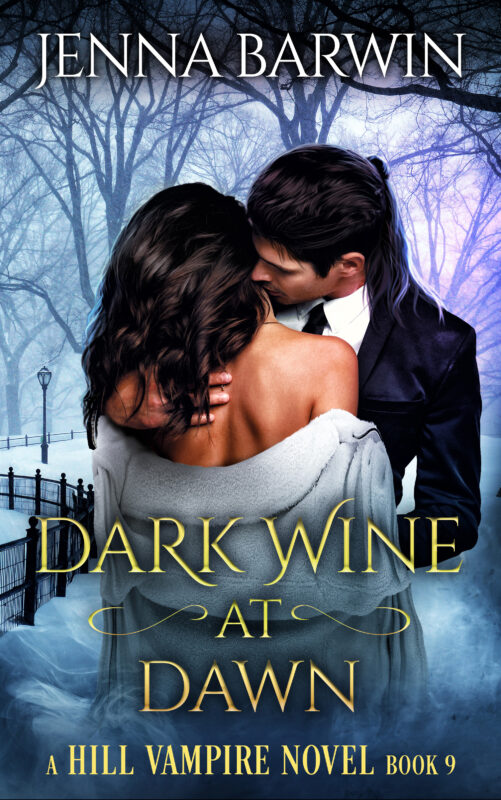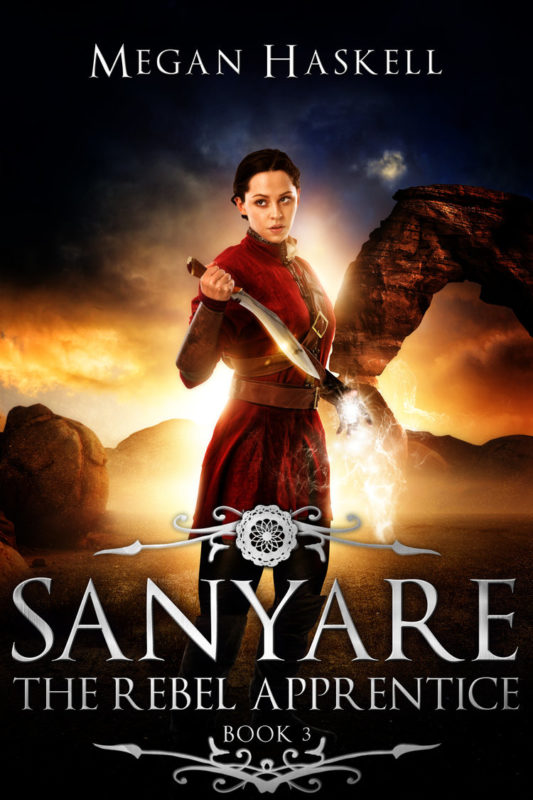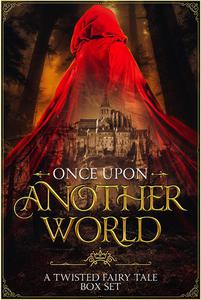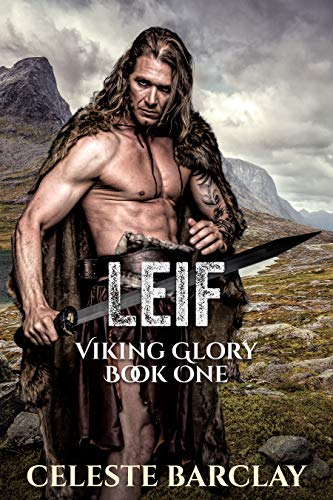An Editor’s Ingredients by Jenny Jensen
November 19, 2019 by Jenny Jensen in category On writing . . . by Jenny Jensen tagged as Editors, working together, writing
A perspective client and I were in the first stages; you know, where you get a feel for one another to be sure of a good fit. It was a great exchange. She was funny and literate and serious and we quickly decided to move forward (I passed muster too!). Before she sent her manuscript she had one last question: What are the five things a writer should bring to the editorial table. Great question!
My response:
- An open mind
It’s understood that a writer’s work, partial or finished, represents an enormous personal investment. A lot is at stake here. As an editor I respect that. It’s my job to fully grasp the story’s intent and help the writer realize their vision. To make use of that the writer must have the clarity of thought to look beyond their own words and consider a different, well considered perspective. If I interpret a scene as night when the writer intended day it isn’t because I am too dim to get the intention. It’s because the scene as written did not convey the intent. And it’s likely that I will not be the only one who reads it as night. The writer must be aware and open enough to consider and appreciate input outside their box. - Flexibility
Change is likely required. If some aspect – character, setting, plot point etc. – isn’t right then it requires change and change requires flexibility. My job is to point out what doesn’t work and why. I suggest options, which is often the best way to illustrate why something doesn’t work. Sometimes my suggestion resonates with the author and they use it – always with their own spin. That’s grand and they are welcome to the suggestion but more often than not a writer understands the need for change and does so in a direction I never considered, and it works beautifully. That’s when I’m certain I’ve done my job – I’ve highlighted a weak point and the author sees the breach and jumps in with writerly eyes and fixes it. - A thick skin
Editing isn’t personal. I’m not afraid that my input might hurt feelings. I’m not viewing the manuscript through a friend’s eyes. I’m concerned only with the voice and vision of the work I’m reading. I, as with any good editor, will not hesitate to point out any and all flaws I see. Derisive criticism is a waste of energy and is never constructive. I don’t use it so the author must be able to view the criticism within the context of the story and not as a personal attack. We’re not in this to become BFFs. We’re in it to make the work fantastic. (Though it’s lovely to note that many clients have become warm friends.) - A working disposal system
Every writer has lovingly crafted passages they feel are superb. The words flow like melted chocolate, the character is brilliant, the setting is ripe with atmosphere. It reflects the best of your talents. But what if it doesn’t fit the rhythm of the story? It has to go. Same with all that carefully researched data. If it isn’t useful, if it doesn’t add to the tale, dump it. A writer has to have a ready and willing disposal system. Of course, it doesn’t impact the story to keep a file where all those brilliant bits can be held for future use. - Gumption
With writerly eyes wide open, a brain elastic enough to entertain new possibilities, a skin thick enough to repel the personal and a fully charged ability to delete any detritus, all the writer needs is the passion, the discipline…the gumption to implement the editor’s input. Rewrites are always part of the mix – sometimes just a few scenes, sometimes entire portions. Often it’s the small tweaks that need careful handling to improve the story. Unless the writer has the gumption to go that last mile our efforts are wasted. My edits aren’t meant to discourage but to invigorate, to jazz the writer to make the story shine.
And I love doing just that.
1 0 Read moreWRITERS—Social Warriors
October 19, 2019 by Jenny Jensen in category On writing . . . by Jenny Jensen tagged as changing the world, gutsy women, social change, storytellers, voicies
Like most of you, I’m a voracious reader – voracious and omnivorous. I love every genre but I tend to binge. Right now I’m binging on historicals—adventure, detective, romance and biography. It started with the publication of a client’s historical seagoing adventure. I really love this client—dedicated, talented, determined – and best of all, his 18th century hero is surrounded by characters so real they practically walk off the page.

The cast of characters includes every walk of life one would find in postcolonial America and the wider world. From merchants to millers to a lesbian frontier woman, a free black family, an Ottoman Turk political fixer to a closeted gay Navel officer, not one of these critical players feels forced or token. There is no preachy message, no particular point to be made from this varied cast. They are simply the natural population of this writer’s historical period, as much as all types and flavors are, and always have been, the natural population of the world. Such characters have largely been written out of history by social convention.
In all this bingeing, I’ve come across a few works where the writer loudly and proudly proclaims they are whatever identity they are as opposed to the conventionally accepted population of American novels—mainly Anglo and heterosexual. These voices can feel strident, in your face, surprisingly aggressive. It feels like preaching and I’m not aware of belonging to any particular congregation. It’s awkward and uncomfortable and tends to get in the way of a good story. But beneath all the militant raging I recognize there’s a message that needs to be heard. And I think about the suffragettes.

The right to vote is so smoothly woven a part of my life that I have to make an effort to remember that these woman got strident, got in the face of convention, got extremely aggressive and unpleasant in order to win a basic human right 100 years ago. Those gutsy women were widely vilified, punished and imprisoned, but they got the message across. That’s how it is done.
Writers have always given us more than just great entertainment. Throughout the ages storytellers have had a major impact on society. Kepler’s Somnium (1634), offered radical ideas (the sun is the center of the solar system!) safely disguised as fiction. Uncle Tom’s Cabin, The Grapes of Wrath, Sophie’s Choice . . . a huge list of books from writers who humanized and taught us about people and worlds we were ignorant of before. Those authors were, writers are, social warriors.

So I say welcome those strident voices. Be they people of a different skin color or people of a different bent, excluding their part in the stories of life—the stories we write and read – is to diminish the rich tapestry all writers wish to capture. Those walrus mustachioed gentlemen in their stiff collars and heavy suits survived the onslaught of the women’s vote – and thrived. So shall society survive and thrive acknowledging and embracing the existence of those voices that are not presently the conventional idea of the norm. Long live the power of the pen, the impact of the well told tale!
~Jenny
0 0 Read moreWriting The Dreaded Book Blurb by Jenny Jensen
September 19, 2019 by Jenny Jensen in category On writing . . . by Jenny Jensen tagged as Blrubs, clickbait, Marketing, writing
A popular post from our archives.

Writing The Dreaded Book Blurb
Every author faces this last crucial challenge. You’ve already spent untold hours researching, writing and editing your book. Your title hits just the right poetic note. You’ve gone several tense rounds to find the perfect cover. All that remains is the book blurb, the opening salvo in the promotional war. This is the first (and sometimes only) chance to grab a reader and compel them to buy the book. And so, like click bait, you need to lure your reader with an honest but irresistible snap shot.
It’s an Art
It’s an art, this writing of a synopsis that isn’t a synopsis, this sell copy that isn’t an ad. And for something that isn’t a science there are strict rules: you have to be honest – no misleading the reader. No spoilers or why bother to read it – which can be tough since the spoiler is often the most exciting part of the story. Keep it at 200 words or less and don’t make it one run-on paragraph. Use the proper keywords for your genre. Reveal something about the antagonist – readers like to know if they can root for the hero. This isn’t the place to relate the entire plot but you have to provide the zeitgeist, the feel of the tale. No easy task.
A lot of the writers I work with find this daunting and ask for help, which I am happy to provide. I think it’s difficult for the writer to step far enough away from their work to pick out the enticing, salient points and present them with the tension and intrigue that make for a successful blurb. To the author, all story points are important. I get that, but as an avid reader I know what works for me in a blurb. It’s not how much is said, but how compellingly it’s said.
An Example
I start with a deconstruction approach. It’s possible to distill any story down to bare bones. In his book Hit Lit – Cracking the Code of the Twentieth Century’s Biggest Bestsellers James W. Hall provided the most distilled example I’ve ever seen. This is a beloved tale that we all know intimately: “A young girl wakes in a surreal landscape and murders the first woman she sees. She teams with three strangers and does it again.” It’s short, accurate and intriguing but would it sell the book?
I wouldn’t distill it down that far but it makes a great beginning. What if we knew something about the young girl – an orphan, a princess, a refugee? And what about the surreal landscape – gaping desert, oozing swamp, forbidding mountains? Then the three strangers – female, male, older, menacing, kindly? Is all this murdering spurred by necessity, thrills, defense, the three strangers or is it unintended manslaughter? And finally, what is the young girl up to – revenge, enlightenment, finding a way out of the surreal landscape? Flesh out those points, add some genre keywords, reference any kudos and you could turn those original 24 spartan words into a 160 – 200 word blurb that would peak curiosity and entice the shopper to buy.
If you can step away from the totality of your story and deconstruct the plot to the primary elements, then present those elements in a provocative way you can create an effective selling tool with your book blurb. BTW, that book Hall described? The Wizard of Oz.
Jenny
2 0 Read moreMurder on the Rio Grande by Jenny Jensen
August 19, 2019 by Jenny Jensen in category On writing . . . by Jenny Jensen tagged as characters, crime novels, plotting murder, Series Characters
I’m a fan of whodunnits and crime procedurals with a special lust for a good series. It’s critical the mystery of the murder be compelling in some way—no anonymous muggings—and clues woven in with the chance to solve it, but I love that surprised frisson I get from a solution I hadn’t seen coming. It’s the characters though, that keep me coming back for more (or waiting for the next book which takes patience as a writer should be allowed some time).
It’s been said that good series characters become dear old friends; these are people you’d like to spend time with. I agree, sort of. I love Beckham’s Skelgill—what an odd and intriguing man—but I’m not sure I’d want him over for the holidays. I wouldn’t know what to say to Miss Marple. I would however, be thrilled to spend a weekend at the beach with Forster’s Finn O’Brien and Cori Anderson—they’d be a blast. Regardless, I love all my favorites simply because they are beautifully drawn characters who’s worlds are well worth sharing.
I’ve worked with several clients as they develop a series character and build a complex crime plot. It’s the NYT crossword of plot building. It’s hard work, which (as usual) means rewrite and after rewrite. It’s easy to play at though. That’s what I do when I’m waiting for the doctor or dentist—plot the murder of a fellow patient by another, build up motive and means and then the nurse calls my name. It passes the time more artfully than an ancient issue of People though I’ve been caught staring—awkward, so I’m good at a passive shrug and an innocent smile. But this morning—at 5 am to be precise—we had a real murder in the house.
A baffling, ferocious racket wakes us. My eyes fly open to meet Tom’s, one look enough to know we both know whatever it is, is in the house. Tom shoots up. I follow more cautiously into the living room to see my solid, sturdy couch rocking and pulsing like a thing possessed. A scruffy bit of fur whips frantically from beneath only to be pulled back in. A thumping commences and then a deathly silence, finally broken by the sickening crunch of breaking bone.
Hesitantly we upend the couch and Max, our maniacal Siamese, turns up triumphant blue eye and finishes the last bit of gopher, bones fur and all. In my house. In the structure of my couch. Is this murder? If you’re a gopher, yes. If you’re me, no. We have a horrible gopher problem and it’s Max’s job to sort it. But in the house? Sheesh. I contemplate killing Max.
So it’s not technically a murder. It isn’t even as good as an anonymous mugging. There is a series character though, only he’s the (serial) perp, not the detective and I like him so much he lives in my house. But there is a mystery: who didn’t lock Max’s cat door after sundown? Tom thinks it’s me but you and I dear reader, know otherwise.
~Jenny
6 0 Read moreFrom Our Archives: First Drafts
July 19, 2019 by Jenny Jensen in category On writing . . . by Jenny Jensen tagged as editing, Editors, first drafts, Quotes
Jenny Jensen is deep into a manuscript and unable to come up for air. We’re helping her out by posting one of her articles from our archives. Hope you enjoy it.
 Drafts
Drafts
I love quotes. I collect them, especially quotes about writing from writers I particularly respect. Since I work with writers of all levels from beginners to veterans, I find that sometimes the perfect quote from an established writer is exactly what I need to reinforce a point – so I use my collection well.
I just took on a new client who sent an outline for her first novel. The outline included a précis of the plot, quick character sketches, a few narrative bits on action scenes and several options for an ending. Buried in these concepts were the seeds of a very fresh new voice. I’m excited; it’s the kind of challenge I relish. It’s the perfect opportunity to ask the right questions, provide possibilities and help guide the story to a solid structure – all of which greases the writer’s creative wheels – the give and take nudging them to the path they want for their story.
Shitty First Drafts
The problem was the writer didn’t want to write a draft; she wanted to work with me to get the story full blown in her head then sit down at the keyboard and spit out a finished novel. Oh dear. I imagine there are writers who can do that but they’re as rare as the ivory-billed woodpecker. As Anne Lamott put it in her essay, Shitty First Drafts: “I know some very great writers, writers you love who write beautifully and have made a great deal of money, and not one of them sits down routinely feeling wildly enthusiastic and confident. Not one of them writes elegant first drafts. All right, one of them does, but we do not like her very much.”
“The first draft is just you telling yourself the story.” (TY Terry Pratchett.)
All first drafts suck. It’s a universal law. But it’s where you have to start. “The first draft is just you telling yourself the story.” (TY Terry Pratchett.) So give yourself permission to just spill it, write the most vapid dialog ever if that’s what comes out. It’s OK – it’s a draft. Just get the story out. If you find yourself using more adjectives than Danielle Steele and Judith Krantz combined then this is the place to do it. It’s a draft -no one will ever see it (except me but that’s all right ‘cuz I’ll never tell). Stewart Stafford hit the bull’s eye, “It’s okay to write a cliché in a first draft; it sets a marker that you can get far, far away from in the rewrites.”
The Rewrites
That’s what a draft is for – the rewrites. Here’s where the painful process of filling the blank page becomes fun. You see the flaws and get to slash and revise, hear the perfect dialog over the noise of what you drafted, maybe see a new direction in the wreckage. I’ve encouraged my client to write a first draft. I’ll happily work with her from that, but I bet she goes over it first – who could resist? Draft one or draft two, I don’t care. I can’t wait to see it.
Jenny
0 0 Read more
Affiliate Links
A Slice of Orange is an affiliate with some of the booksellers listed on this website, including Barnes & Nobel, Books A Million, iBooks, Kobo, and Smashwords. This means A Slice of Orange may earn a small advertising fee from sales made through the links used on this website. There are reminders of these affiliate links on the pages for individual books.
Search A Slice of Orange
Find a Column
Archives
Featured Books
SANYARE: THE REBEL APPRENTICE
To save millions of lives, she may have to sacrifice the ones she loves…
More info →ONCE UPON ANOTHER WORLD: A Twisted Fairy Tale Box Set
Not all fairy tales are as they appear.
More info →LEIF Viking Glory Book One
Fate brought them together. Free will binds them.
More info →Newsletter
Contributing Authors
Search A Slice of Orange
Find a Column
Archives
Authors in the Bookstore
- A. E. Decker
- A. J. Scudiere
- A.J. Sidransky
- A.M. Roark
- Abby Collette
- Alanna Lucus
- Albert Marrin
- Alice Duncan
- Alina K. Field
- Alison Green Myers
- Andi Lawrencovna
- Andrew C Raiford
- Angela Pryce
- Aviva Vaughn
- Barbara Ankrum
- Bethlehem Writers Group, LLC
- Carol L. Wright
- Celeste Barclay
- Christina Alexandra
- Christopher D. Ochs
- Claire Davon
- Claire Naden
- Courtnee Turner Hoyle
- Courtney Annicchiarico
- D. Lieber
- Daniel V. Meier Jr.
- Debra Dixon
- Debra H. Goldstein
- Debra Holland
- Dee Ann Palmer
- Denise M. Colby
- Diane Benefiel
- Diane Sismour
- Dianna Sinovic
- DT Krippene
- E.B. Dawson
- Emilie Dallaire
- Emily Brightwell
- Emily PW Murphy
- Fae Rowen
- Faith L. Justice
- Frances Amati
- Geralyn Corcillo
- Glynnis Campbell
- Greg Jolley
- H. O. Charles
- Jaclyn Roché
- Jacqueline Diamond
- Janet Lynn and Will Zeilinger
- Jaya Mehta
- Jeannine Atkins
- Jeff Baird
- Jenna Barwin
- Jenne Kern
- Jennifer D. Bokal
- Jennifer Lyon
- Jerome W. McFadden
- Jill Piscitello
- Jina Bacarr
- Jo A. Hiestand
- Jodi Bogert
- Jolina Petersheim
- Jonathan Maberry
- Joy Allyson
- Judy Duarte
- Justin Murphy
- Justine Davis
- Kat Martin
- Kidd Wadsworth
- Kitty Bucholtz
- Kristy Tate
- Larry Deibert
- Larry Hamilton
- Laura Drake
- Laurie Stevens
- Leslie Knowles
- Li-Ying Lundquist
- Linda Carroll-Bradd
- Linda Lappin
- Linda McLaughlin
- Linda O. Johnston
- Lisa Preston
- Lolo Paige
- Loran Holt
- Lynette M. Burrows
- Lyssa Kay Adams
- Madeline Ash
- Margarita Engle
- Marguerite Quantaine
- Marianne H. Donley
- Mary Castillo
- Maureen Klovers
- Megan Haskell
- Melanie Waterbury
- Melisa Rivero
- Melissa Chambers
- Melodie Winawer
- Meriam Wilhelm
- Mikel J. Wilson
- Mindy Neff
- Monica McCabe
- Nancy Brashear
- Neetu Malik
- Nikki Prince
- Once Upon Anthologies
- Paula Gail Benson
- Penny Reid
- Peter J Barbour
- Priscilla Oliveras
- R. H. Kohno
- Rachel Hailey
- Ralph Hieb
- Ramcy Diek
- Ransom Stephens
- Rebecca Forster
- Renae Wrich
- Roxy Matthews
- Ryder Hunte Clancy
- Sally Paradysz
- Sheila Colón-Bagley
- Simone de Muñoz
- Sophie Barnes
- Susan Kaye Quinn
- Susan Lynn Meyer
- Susan Squires
- T. D. Fox
- Tara C. Allred
- Tara Lain
- Tari Lynn Jewett
- Terri Osburn
- Tracy Reed
- Vera Jane Cook
- Vicki Crum
- Writing Something Romantic
Affiliate Links
A Slice of Orange is an affiliate with some of the booksellers listed on this website, including Barnes & Nobel, Books A Million, iBooks, Kobo, and Smashwords. This means A Slice of Orange may earn a small advertising fee from sales made through the links used on this website. There are reminders of these affiliate links on the pages for individual books.






































